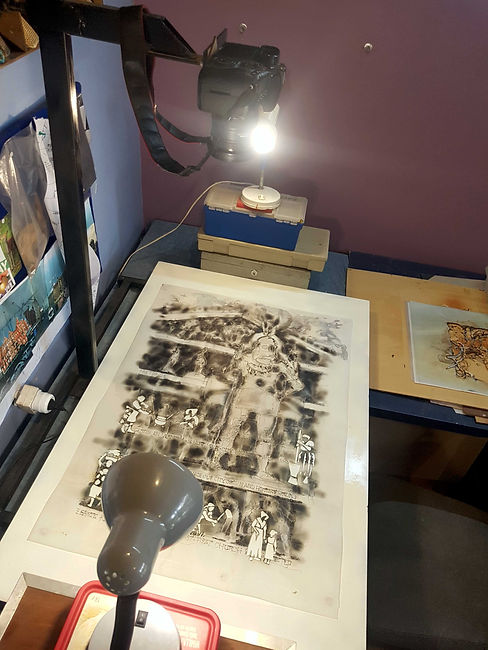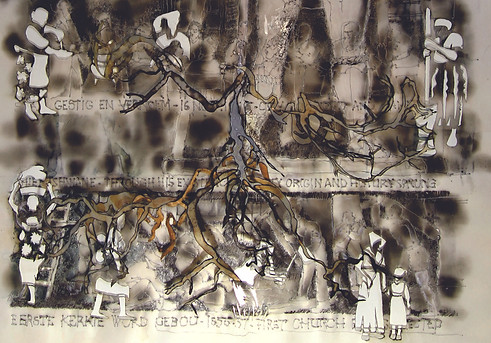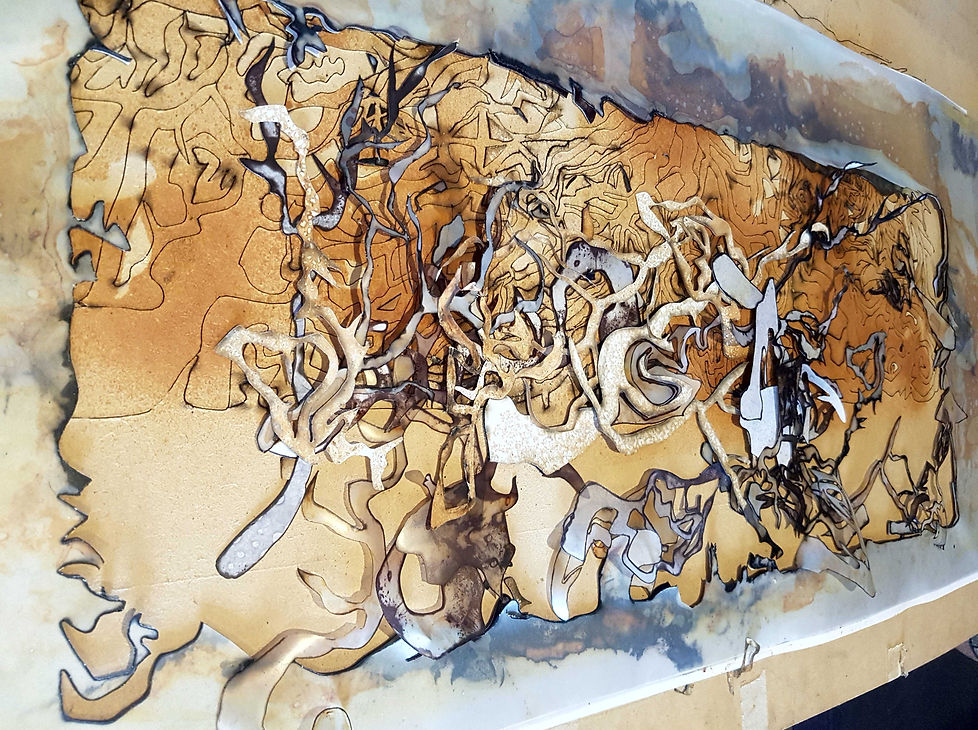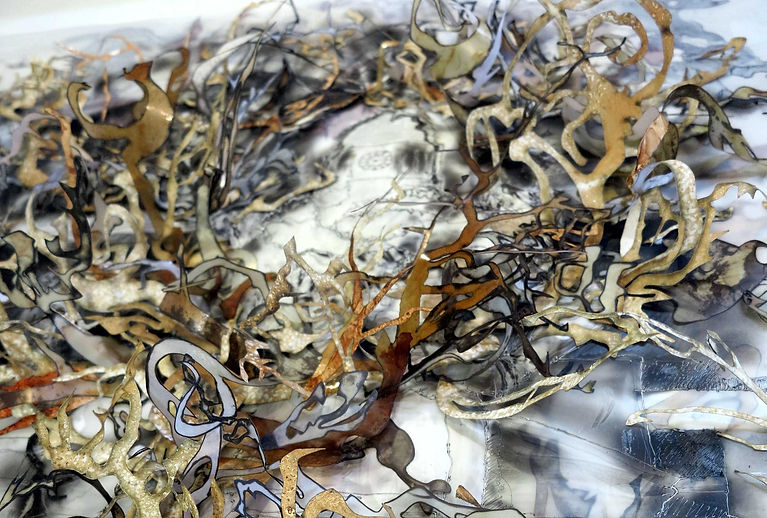Sue Clark
THE GODS OF PRETSHWANE
How PreTshwane got its name
The City Hall site with its attendant statues is significant, considering how statues function to create or negate history. The reliefs, the tympanum of City Hall, and statues depicting Chief Tshwane, Andries Pretorius, and Marthinus Wessels Pretorius express collective memories, inevitably biased, concerning the city’s origins.
How PreTshwane got its name (2021) is a mixed media work that commenced with a collage of architectural elements surrounding the site. Made on old thermal drafting paper burnt and cut to create an animated transformation of the site, women are incised into the work, counterbalancing all the males of the reliefs and statues, with the notable exception of one good wife on the tympanum.
The permanence and ability of bronze and marble to retain memories are compromised by vandalism and defacement of buildings and statues. Entangling roots and stems embrace and eventually conceal the depicted figures. It is ironic that the bronzes, designed as eternal memorials to heroes, are obscured and obliterated by organic plant life.

How PreTshwane got its name 2021
Soldering iron, heat gun on thermal paper, 120 x 80 cm
Augmented reality animation
Process
The process of incising the female figures into the original drawing to the gradual addition of the cut out organic forms were photographed. This became a time-lapse video with extra lighting effects and sound added to represent the passage of time and exposure to elements (wind, rain, and fire).


Animation workstation
Original base drawing


Female figure incised into reliefs and sculptures
Original base drawing detail

cutting and colouring organic growth


